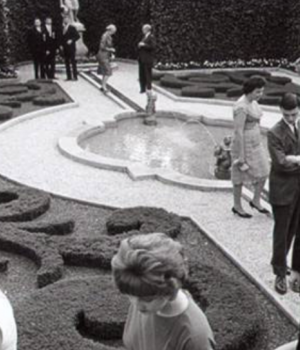Written by Zoe Manoukian
With COVID ever present, it can be difficult to find safe and enjoyable activities. At times, it can even be difficult to find establishments that are open. Many museums and restaurants in DC are still closed, much to the chagrin of those hoping to visit our capital soon. Private museums such as the Bible Museum and the National Museum of Women in the Arts are permitted to stay open, as is the Hillwood Estate, Museum, and Gardens. I would strongly encourage anyone to visit the Hillwood Estate during their next trip to DC.
The estate once belonged to American socialite Marjorie Merriweather Post, heiress to Postum Cereal Company and General Foods Corporation. Post had a strong affinity for Imperialist Russian art and therefore has an expansive collection of beautiful artworks ranging from portraits to Fabergé Eggs which are on display. She also maintained a beautiful jewelry collection. Post lived incredibly lavishly, owning various mansions and yachts and employing several butlers and maids.
While incredibly affluent, Post was also quite philanthropic. During World War I, she funded a U.S. army hospital in France. During the Great Depression, she financed and supervised a Salvation Army feeding station in New York. She later donated $200,000 to the National Culture Center in Washington, which is now known as the John F. Kennedy Center for the Performing Arts, and in 1955 she donated $100,000 to the National Symphony.
Her house, which visitors can tour through reserving tickets before arrival, is beautifully decorated in the 18th century French decorating style. Visitors can enjoy perusing her opulent home and lavish rooms, such as her drawing room, kitchen and dining room, library, and even various porcelain rooms.
For those who are seeking a beautiful and safe outdoor experience, strolling through the gardens is a wonderful option. The gardens are upkept beautifully to this day, and are embellished with various statues, plants, and fountains gifted to Post by her adoring friends. During my recent visit, I saw blooming pansies, daisies, snapdragons, cherry trees, and camellias among others.
At the start of the garden is a French parterre, a lovely hedged and symmetrical path centering a fountain which flows towards Diana, goddess of the hunt. A few steps later is the charming “Friendship Walk”. This path is ornamented with a lovely fountain and four statues resembling the four seasons. Moreover, she added two wooden bridges in a Japanese inspired portion of her garden. Her “Lunar Lawn” is the perfect spot for a picnic and, in Post’s case, the perfect spot for receptions with Washington’s social elite. This elegant lawn also has a clear view of the Washington Monument, which is surprisingly only 10 miles away from this secluded seeming estate. Post also has various greenhouses dedicated to the care of plants in the colder seasons, an Adirondack Building resembling her summer retreat in upstate New York, and a Russian inspired Dacha. Golfers will appreciate her Putting Green where Post invited friends and colleagues to practice their golfing skills with her. Lastly, animal lovers may feel touched by her dog cemetery where the beloved dogs of Post and her family and friends are laid to rest and memorialized.
Wherever your interests lie, you are sure to have an enjoyable experience at the Post Estates and Gardens. Post herself was a fascinating and good-natured woman and the gardens which she left behind are a unique and fulfilling getaway in an otherwise noisy city, and, moreover, provide for a wonderful and safe afternoon.




